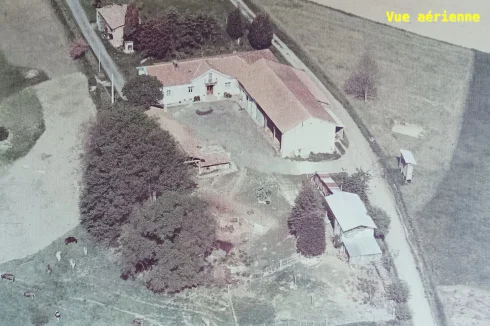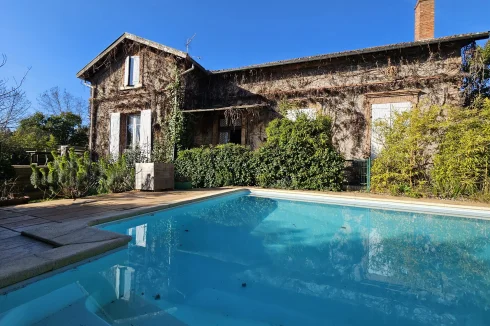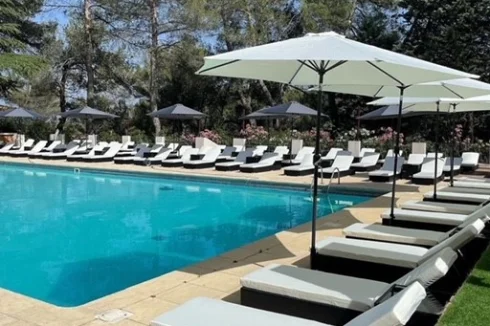Log Burner or Pellet Stove?
Friday 04 December 2020
With new pollution laws in place, pellet burning stoves look set to become the alternative to traditional wood burning versions in France.*
France has been relatively slow to adopt the use of pellet burning stoves, due in large part to the fact that, as so much of the country is forested, there is a relatively plentiful supply of modestly priced firewood.
This is in marked contrast to other countries such as the UK and Italy, where take up has been faster.
However, their use is spreading, particularly in urban areas, driven in large measure by increasing restrictions on emissions from conventional wood burning stoves, growing public environmental awareness and the cost of alternative energy sources.
As a result of new pollution regulations in Europe, over the next few years the stoves are likely to become the choice of appliance for those who wish to use biomass heating in their home.
The 'Ecodesign 2022' regulations came into force for boilers on 1st January 2020, and for biomass heaters they will apply from 1st Jan 2022.
The regulation imposes substantially increased standards of energy efficiency and particulate emissions for new appliances. Existing wood burners are not affected by the regulations; only those manufactured after 2022 will need to comply.
In anticipation of the new requirements, most manufacturers of wood burners have already adapted their models to meet the new standards.
So wood burners are still going to be available, but they will be more expensive, making pellet stoves a more interesting option for consumers.
What are they?
Pellet stoves (poêles à granulés) use compressed wood or biomass material.
The pellets are loaded into a hopper or reservoir at the back of the stove and automatically fed into a combustion chamber.
The rate of feed varies upon your heat output requirements.
The heat from the reaction is then either convected or fan-assisted out into the selected areas, while any waste gases are safely evacuated through a flue.
The stoves should not to be confused with full domestic boiler systems (chaudières), which might also be pellet-fuelled.
What are the advantages?
There are several reasons why you may wish to consider a pellet stove:
- Low Pollution - providing you have a modern stove and you are using quality pellets this is a very low pollution solution to heating. Pellets give off substantially fewer particles into the atmosphere than conventional logs in older burners, though that difference is largely eroded in the latest 'green log' stoves;
- Efficient - it is very efficient, with the latest systems claiming around 90% heat conversion, compared to 70%-80% for wood burners; there is also a greater level of temperature control than is the case with a wood burner;
- Cost Effective - latest government figures show heating costs to be 6 cents per kwh for a pellet stove; electricity is at least 17 cents per kWh, natural gas 8 cents per kWh, propane gas 15 cents per kWh, and oil 9 cents per kWh. Wood logs are the cheapest form of heating, at 4 cents per kWh;
- Labour Saving – Compared to a traditional wood burning stove there is no need to bring in logs for it, or to make the fire each day and regularly add new logs to feed it or deal with ash on a daily basis. And, of course, no more chopping of wood;
- Cleaner - it is cleaner than a wood burner, as there is no need to carry or stock wood in the property.
Are there disadvantages?
It does depend on the comparisons used and your circumstances, but some disadvantages are:
- Room Heating - pellet stoves are for room heating only, so may only be suitable for secondary heating. Pellet boilers offer central heating, but at a price, and we do not consider them here;
- Space - storing pellets takes a lot of space, but that is also the case for a wood burner;
- Maintenance - the stove must be cleaned on a regular basis, although that it is even more the case with a wood burner as an annual chimney cleaning required;
- Purchase Cost - the stoves can be considerably more expensive to buy than a conventional wood-burner;
- Running Costs - it is more expensive to run than a wood burner;
- Electricity Supply - as it requires an electricity supply to run it, it does not run in the event of a power-out, although it is possible to purchase battery back-up;
- Noise - if you fan-drive the heat distribution, as opposed to using convection, you may have some mild background noise;
- Ignition - unlike an ordinary wood-burner, they need electricity for ignition and for the fan to distribute the heat.
How much does a stove cost?
Prices vary enormously depending on size, the material used, efficiency, and combustion technology.
Prices in France range from around €1,500 at the bottom end up to €6,000 at the upper end, although the largest high specification models can go well beyond this level.
An average of around €4,000 is the norm for an efficient system suitable for a large room.
The best stoves will be accredited with the 'Flamme Verte' label, offering heat conversion of around 90%.
Some of the best brands to buy in France are Italian, such as Freepoint, Ravelli, and Palazetti, all of whom have a strong presence in the country. Rika from Austria are also a major supplier. You need to check on-line for suppliers and prices across Europe.
In each case you will also need to budget for the cost of the flue (wall or chimney) and related equipment and the labour cost if not already installed. There may also be other changes you will need to make to the property to accommodate the installation.
How much do the pellets cost?
The pellets are available either loose ('en vrac'), in sacks or in large containers.
There are significant price differences depending upon the nature of the pellets and how they have been formed, so care is needed before you buy, as an attractive price will almost inevitably be reflected in the quality of the product. Be careful of terms used that have no official quality rating.
The main legally recognised guarantee of quality in France as 'NF Haute Performance', but pellets sourced from outside of France may also have the quality standard 'DIN Plus', or 'EN Plus A1'. Take advice from your stove supplier for suitable pellet suppliers.
Prices are going to be lower when purchasing from major suppliers and in volume, as opposed to your local garden centre. Prices can also differ, sometimes inexplicably, depending upon your location.
A one-ton pallet of 15kg bags will cost €300+, and some suppliers only offer a minimum quantity delivery. Many also offer delivery of one ton or more in a silo container or less in 'big-bags'.
How long do the pellets last?
It will depend on many factors - the model of the stove in question, the type of pellets you have chosen, your temperature preferences and most importantly, the size of the area you are heating and its insulation etc.
Some figures suggest that for a larger area perhaps including several rooms, eight hours of heating will be achieved through a 15kg sack – with a cost therefore of around €5-€6.
Over the year, if you are using the stove on a regular basis then most households will probably need to buy at least 4 tons of pellets, at a cost of upwards of a €1,200 a year. The cheapest time of the year to buy is in the summer.
If you are to buy on the most economic basis, you are also going to need a secure, dry place to stock them.
How to approach it?
Care is needed in selecting the power output, to ensure it is properly sized for your room or property. The output of the stoves can vary from 3kW up to 20kW or more and the larger models have the capacity to heat +200m3 of space.
As always it pays to take professional advice in the specification of the stove, and the installation works, and to ensure that the installation is carried out by a qualified professional. Without professional installation your insurer is unlikely to cover you in the event of a fire.
Stories are widespread in France of properties that have gone up in flames as a result of poor installation, or of households who have regretted they did not give more consideration to the selection of their stove.
Use only a certified professional with 'RGE Qualbois' certification, but as there are many such contractors in France there is no need to use the first one you come across. You need to make sure their certification is current, which you can do by going on the government website Qual-Enr.
The amount of your investment may also be conditioned by your anticipated level of usage. Clearly, if the stove is to be your principal form of space heating, and the property is your main home, the budget may need to by higher, whereas if it is only a secondary form of heating then a more modest outlay may all that is required.
As a general rule, a pellet stove makes more sense for regular, more intensive use.
Arguably, as with the installation of any new heating system, with a pellet stove you also need consider the energy performance of the property and measures of insulation that may be necessary.
Are there grants available?
There are grants available for the installation of a stove, whicy you can read about in our general Guide to Home Energy Efficiency in France.
In order to qualify the stove will need to meet a minimum specification, and you will need to have it supplied and installed by a certified contractor. So purchasing more cheaply from a supermarket may mean you lose entitlement to the grant.
Thank you for showing an interest in our News section.
Our News section is no longer being published although our catalogue of articles remains in place.
If you found our News useful, please have a look at France Insider, our subscription based News service with in-depth analysis, or our authoritative Guides to France.
If you require advice and assistance with the purchase of French property and moving to France, then take a look at the France Insider Property Clinic.





